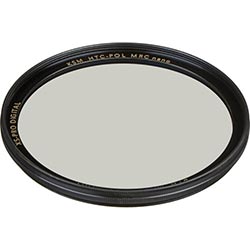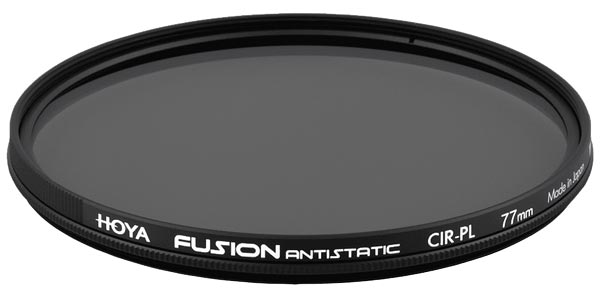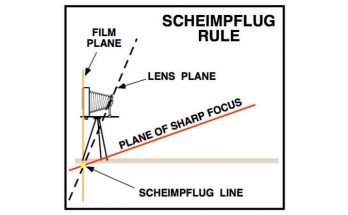What is a polarizing filter?
A polarizing filter, also referred to as a polarizer, is an optical filter that is attached to the front of a camera lens. This kind of filters is mostly used to enhance contrast, reduce glare and atmospheric haze in landscape photography. A polarizer is one of the few photographic filters whose effect cannot be digitally simulated, and is therefore a popular addition to digital photographers’ equipment.
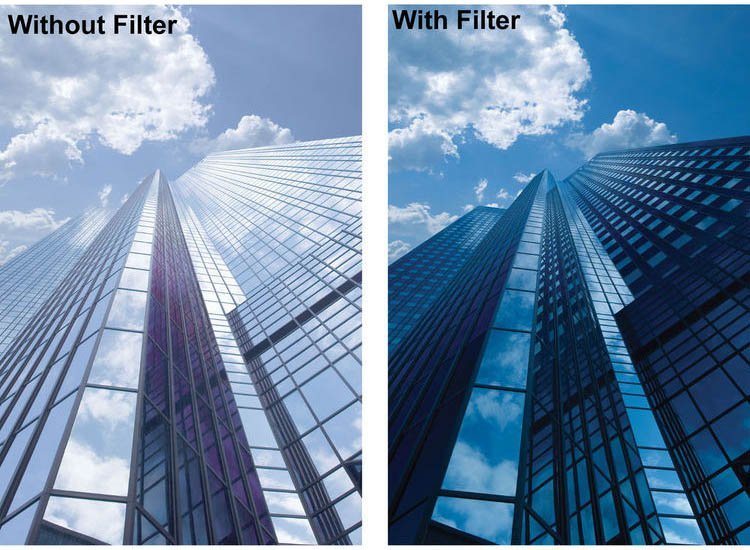
How does a polarizing filter work?
A polarizer filter, like most modern camera filters, consists of a foil sandwiched between two thin plates of high-quality glass. As with other filters, there are different types of coatings and treatments applied to those plates to provide better light transmission and scratch resistance and to prevent ghosting and other artefacts.
The component that does the actual polarizing of the light is the polarizer foil. You can imagine it as a sort of an optical grid that only allows light through if it is rotated (or polarized) in a certain way. Light reflected from a non-metallic surface like glass or water becomes polarized. A polarizing filter rotated to pass only light polarized in the direction perpendicular to the reflected light will absorb much this reflected light. This effects is what allows polarizers to reduce glare reflected from the surface of a river or the window of a car.
How do you use a polarizing filter?
Using a polarizer is as simple as screwing it to the front of your lens. Once you’ve attached it securely, look through the screen or viewfinder and slowly rotate the filter until you achieve the desired result. Be careful not to unscrew the filter from the lens while you do that.
You might have to remove the lens hood in order to put the filter on. You can replace the hood after you put the filter, but it’s usually difficult to work with the polarizer with a hood on. If there is direct light hitting the filter, you might have to adjust the angle of the polarizer and then replace the hood before taking the picture.
What are the different types of polarizing filters?
All polarizing filters rely on the same optical principles for their operation and yield largely the same results. There are, however, a couple of variations in optical and physical construction to be found:
Linear or circular polarizer?
Linear and circular polarizers both utilize linear polarizer foil to do the actual filtering of the light and therefore provide the same visual effect on the image. However, while a linear polarizing filter makes do with just that foil, a circular polarizer has an extra layer. This is necessary to allow polarizers to be used with modern SLR cameras.
Most TTL (through the lens) metering cameras have a beam-splitting prism or a mirror. The prism sends part of the light to the meter and autofocus sensors and part to the viewfinder. In doing this, the prism partially polarizes the light. If a simple linear polarizer is placed in front of such a system it will act as a second polarizer, inadvertently creating a variable neutral density filter for the meter and AF sensors. This would result in incorrect metering and erratic autofocus. A circular polarizer prevents this problem by the addition of a so-called quarter-wave retarder foil. This foil transforms the linearly polarized light into a rotation that appears unpolarized to the meter, enabling proper metering and autofocus.
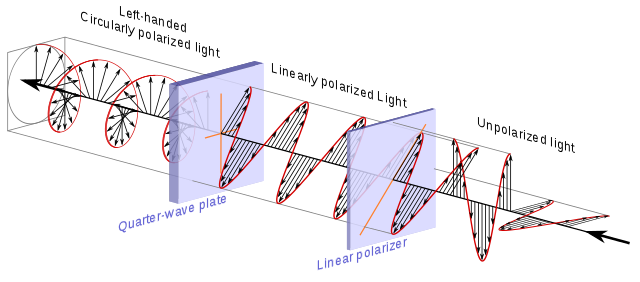
In essence, a linear polarizing filter is best suited to applications where no TTL metering and autofocus is done. For example, there are no technical difficulties when using linear polarizers on rangefinder, TLR and view cameras. In all other cases, a circular polarizer is your best bet.
Screw-in, round or square polarizer?
Due to the way a polarizer filter works, it’s mounting hardware is slightly different than regular filters. While a regular camera filter works independently of its orientation, a polarizer’s effect is changed as the filter is rotated. Because of this, when using a polarizer you need to be able to quickly and easily set the precise rotation of the filter. Lens hoods can sometimes interfere with this, so check compatibility with your equipment.
Choosing a polarizer, you must take into consideration the way you use filters as a whole. If you generally do not use filters and do your color-correcting, dodging and burning in post, then a screw-in polarizer is usually the best option, as long as your lens supports one. As a screw-in filter, the polarizer is mounted in a frame that consists of two collared rings, one holding the attachment threads and the other the filter itself. This allows the filter to be freely rotated while being securely attached to the lens.

A second option is to use a round, mounted polarizer in a system holder like the Lee pictured above. This provides a lot of flexibility in case you are using a number of filters at once, and especially if you use graduated neutral density filters. It is a bit more cumbersome and most suited to tripod-based landscape photography.
A square polarizer that requires a holder to be positioned in front of the lens might prove to be a little more difficult to operate.
Kaesemann type polarizing filter
A Kaesemann type polarizer is a type of high-end polarizing filter in which the filtering foil is stretched and held under constant tension in all directions. This is done by edge sealing the filter foil in glass, which is a bit more involved than the normal filter sandwich construction.
The Kaesemann polarizer advantages are that the polarizing effect is just as strong while the light transmission is improved. While a standard polarizer may cost you up to 2.5 stops of light, a Kaesemann reduces light loss to about 1.5 stops, meaning that it allows two times more light through.
In addition, the filter pack is completely sealed, so it is impervious to moisture that can lead to delamination and degradation in a regular filter. A Kaesemann is also very flat, which is key to preserving sharpness.
Polarizers as neutral density filters
As discussed briefly above, when two linear polarizers are stacked one after the other, the stack functions as a variable neutral density filter. This is used by a lot of manufacturers that now offer variable ND filters in many shapes and sizes. In a pinch, provided you’ve got two linear polarizers of the same size lying around, you can roll your own by simply screwing them together. Watch out for ghosting or other artifacts that can appear once you stack a couple of glass surfaces in front of your lens.

